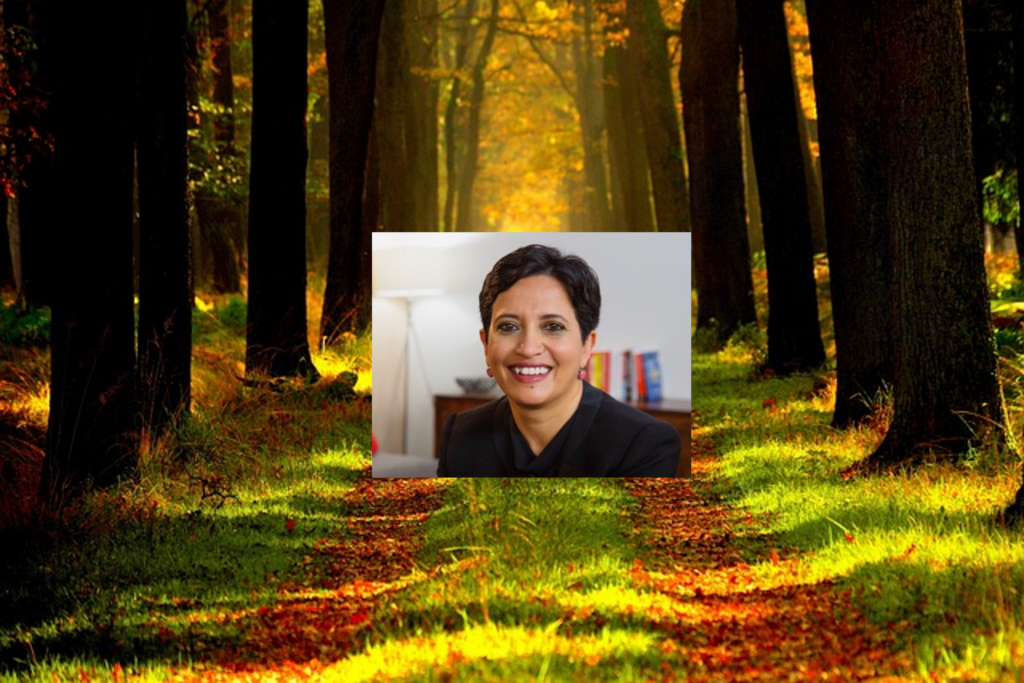Entrepreneur Journeys
The Startup Velocity Question: What Hinders Acceleration in VC Funded Companies?

I have been running 1Mby1M since 2010. I find myself saying to entrepreneurs ad nauseam that VCs want to invest in startups that can go from zero to $100 million in revenue in 5 to 7 years.
Startups that do not have what it takes to achieve velocity should not be venture funded.
Experienced VCs, over time, have developed heuristics to gauge what constitutes a high growth venture investment thesis.
>>>1Mby1M Udemy Courses with Sramana Mitra: Bootstrapping

Over the course of two years, we have released over 70 courses on Udemy with the aim to democratize entrepreneurship education at scale globally. This series of posts aims to help you find the one you need easily and provide you with discount coupons.
>>>Bootstrapping a Web Hosting Company to $60 Million: Christopher Aker, CEO of Linode (Part 1)
If you haven’t already, please study our Bootstrapping Course and Investor Introductions page.
Chris had many opportunities to raise money along the way while bootstrapping to a $60 million revenue level. Find out why he chose not to.
Sramana: Chris, let’s start with the beginning of your story. Tell me where you are from and set the stage for your entrepreneurial journey.
Christopher Aker: I was born in Atlantic City, New Jersey. We lived on the main land off of a coastal barrier island. I had a traditional American, South Jersey coastal upbringing. We had a lot of summer jobs and a huge amount of people would flock to our town in the summer to enjoy the beach. >>>
Featured Videos
Can 1M/1M Help Me Raise Money?
How Does 1M/1M Democratize Entrepreneurship Education?
How Does 1M/1M Democratize Management Consulting?
When Is The Right Time To Join 1M/1M?
Can 1M/1M Help Me With Business Development?
Can 1M/1M Help Me With Market Sizing?
Can 1M/1M Help Me Validate My Product?
Will I Have Private 1-on-1 Sessions In 1M/1M?
How Does 1M/1M Help Entrepreneurs Connect With Silicon Valley?
Mentoring or Consulting?
Why Does 1M/1M Charge $1000 a Year?
Why Does 1M/1M Partner With Local Organizations?
Why Don\’t Mentoring Networks Work?
Why Is It Important To Study With 1M/1M Now?
Dan Stewart Story
Vikrant Mathur Story
Bootstrapping Using Services to $15 Million in Venture Capital: Gravitant CEO Mohammed Farooq (Part 1)
If you haven’t already, please study our Bootstrapping Course and Investor Introductions page.
We continue to see exciting enterprise software companies being built by entrepreneurs who have roots in the consulting business and who have taken their domain knowledge and customer insights to develop compelling products to solve specific problems. Gravitant is yet another case in point.
Sramana: Mohammed, let’s start our discussion by reviewing your background. Where do you come from? What are the roots of your entrepreneurial journey?
Mohammed Farooq: I am originally from India, close to Hyderabad. I went to engineering school in India and came to the United States in 1991 to attend graduate school. I was born in 1967 and went to school locally in India. I attended Gulbarga University in India where I studied mechanical engineering. I attended graduate school in Oklahoma. In Oklahoma, I completed a dual degree in operations research and computer science. I then did an MBA in finance as well. >>>
From $3 a Day to Successful Entrepreneur: Tomas Gorny, CEO of Nextiva (Part 1)
If you haven’t already, please study our Bootstrapping Course and Investor Introductions page.
I see so many people making excuses for why they are not successful – discrimination, fate, luck, all external factors. Read Tomas Gorny’s story. I hope it will give you some perspective and some attitude adjustment that hopefully propels success.
Sramana Mitra: Let’s start with your background. Tell us where you are from, where you were born and raised, and in what kind of background.
Tomas Gorny: I was born originally in Poland. I lived there for 14 years. It was a communist country. Poland didn’t have middle-class families at that point in time because everybody was relatively poor. At the age of 14, I moved to Germany where I spent another six years. Then at the age of 20, I moved to the United States.
Bootstrapping a Global Software Product Company Using Services From Denmark: Sitecore CEO Michael Seifert (Part 1)
If you haven’t already, please study our Bootstrapping Course and Investor Introductions page.
European software companies seldom reach global scale. Sitecore has not only reached global scale, but is competing with Oracle, Adobe, IBM, and Salesforce.com. Read how they have navigated the market.
Sramana: Michael, where are you from? What is the background to your story?
Michael Seifert: I was born in the Copenhagen area where I lived until first grade. I then moved to a little island in Denmark with a population of about fifty thousand people. I lived there with my mother and her brothers through high school. My father moved to the US when I was 8 or 9. I spent my summer vacations in the Bay area with my father. My first flight to the US was at age 11.
Sramana: Your father moved to the Bay area, so I am assuming that is where you got your early exposure to this culture?
Michael Seifert: Yes. He started a company called SunFlex. I enjoyed going to work with him and that is where I was exposed to my first computer. >>>
Building to $10 Million in EdTech: Panopto CTO Eric Burns (Part 1)
If you haven’t already, please study our Bootstrapping Course and Investor Introductions page.
One of the issues we’ve discussed is the slow-growth nature of the EdTech industry. This interview explores the question in depth, and shows how Panopto is mitigating the issue through sector diversification.
Sramana Mitra: Eric, let’s start at the beginning of your story. Tell us where you were born and raised, and in what kind of circumstances.
Eric Burns: I was born in Nashville, Tennessee. My father, at that time, was in a seminary to be an Episcopal priest. He finished seminary and we moved to Knoxville, Tennessee when I was very young. My dad opened his parish there. My mom was a psychologist.
A Serial Entrepreneur Who Understands ‘Work’: WorkMarket CEO Jeff Leventhal (Part 1)
If you haven’t already, please study our Bootstrapping Course and Investor Introductions page.
Jeff Leventhal has built four businesses in the domain of ‘work’ and has created a blue-print of managing distributed workforces on behalf of companies. All four businesses have monetized well for this serial entrepreneur who really has the magic touch!
Sramana: Jeff, let’s start with a bit of background. Where were you born and raised?
Jeff Leventhal: I was born in Florida. I was raised in New York and I lived in New York City for 20+ years. I now live on Long Island where I was raised. >>>
Building a Fat Startup: Apptio CEO Sunny Gupta (Part 1)
If you haven’t already, please study our Bootstrapping Course and Investor Introductions page.
One more look at what it takes to build a fat startup. Sunny Gupta discusses Apptio. The company raised a $7 million series A to get started, and then went to raise over $130 million thus far.
Sramana Mitra: Sunny, let’s start at the very beginning. Tell us a bit about yourself. Where were you born and raised? What kind of circumstances? Give us a backstory of the Apptio story.
Sunny Gupta: I was born in India in a town north of New Delhi. I went to school there and lived in New Delhi till I was 19. My father was in the government services. This is in the late ’80s and I didn’t feel, from a career perspective, that there were that many career options. >>>
Comment-Selling on Facebook: Smocked Auctions Founders Amy Laws and Nicole Brewer (Part 1)
If you haven’t already, please study our Bootstrapping Course and Investor Introductions page.
Advertising on Facebook is complicated. You can spend tons of money getting ‘Likes’ without making any sales. Smocked Auctions is very smart about actually ‘selling’ on Facebook. Much to learn!
Sramana: Amy and Nicole, I would like to start by talking a bit about your personal journeys. Where are you from? What circumstances were you raised under?
>>>
Bootstrapping with a Paycheck: Axosoft CEO Hamid Shojaee (Part 1)
If you haven’t already, please study our Bootstrapping Course and Investor Introductions page.
Bootstrapping using a paycheck is a real trend. Here’s one more case study!
Sramana Mitra: Hamid, tell us a bit about yourself. Where were you born and raised and in what kind of background?
Hamid Shojaee: I was born and raised in Iran. I was 10 years old when we moved to the United States.
Sramana Mitra: What time frame was this?
Hamid Shojaee: I was born in 1973. I was there until about the end of 1983.
Black Entrepreneur in North Carolina Says No Bias: Rod Brown, COO of OnceLogix (Part 1)
If you haven’t already, please study our Bootstrapping Course and Investor Introductions page.
We constantly hear from pundits that specific demographic groups face bias in the industry. Rod Brown works with a team of black entrepreneurs in North Carolina, and has a refreshingly positive attitude with which they’re building OnceLogix. His simple message: ‘Solve problems.’
Sramana: Rob, tell us where you are from and what your background is. What is the backstory to your entrepreneurial journey?
Rod Brown: I am from a small town in North Carolina. I went to school at Winston-Salem State University. My background is in financial services. I was in banking for many years before I became an entrepreneur. I worked for a Fortune 500 bank and did Banking Operations for 10 years before I jumped the fence and started doing financial management. I became a licensed financial advisor for sales, stocks, and bonds. I was basically a money manager. >>>
